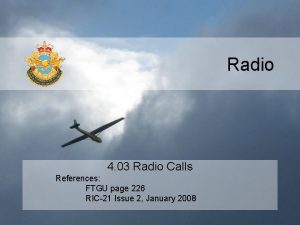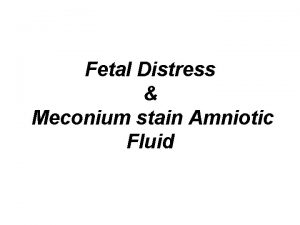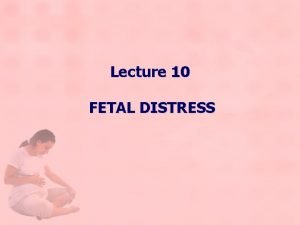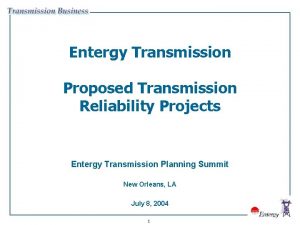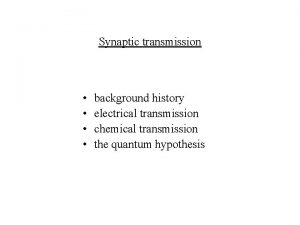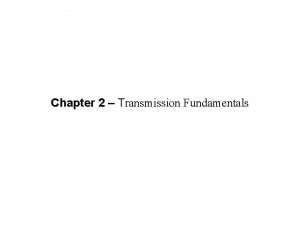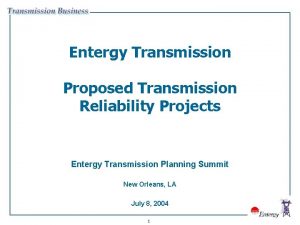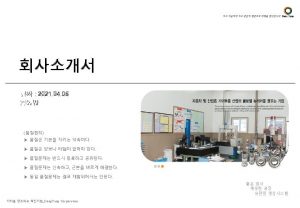DISTRESS SIGNAL AND DISTRESS TRAFFICURGENCY TRANSMISSION Introduction Distress

























- Slides: 25

DISTRESS SIGNAL AND DISTRESS TRAFFIC/URGENCY TRANSMISSION

Introduction Distress alerting – Ship to shore The Global Maritime Distress and Safety System (GMDSS) as described in SOLAS Chapter IV defines the first functional requirement as: "Every ship, while at sea, shall be capable of transmitting ship-to-shore distress alerts by at least two independent means, each using a different radiocommunication service". three methods of transmitting a distress alert: EPIRB Digital Selective Calling (DSC) INMARSAT

General Regulations Distress calling procedures are compulsory for the maritime mobile service and for correspondence between ships, aircraft and survival crafts. No regulations shall prevent a coast station from using any available means to give assistance to a distress station. Distress signals/messages must only be transmitted on the direct orders of the master or the officer-in-charge.

Distress, Urgency and Safety frequencies VHF: 156. 8 Mhz (Channel 16) MF: 2182 Khz Two most commonly used: HF: VHF Ch. 16 and MF 2182 Khz 4125 Khz 6215 Khz 8291 Khz 12290 Khz 16420 Khz

In distress situation, speech and radiotelephony must be as SLOW and CLEAR as possible. Click to play video

The international distress and calling frequency 2182 Khz used by ship stations, aeromobile stations, and survival craft stations. Coast stations open for public correspondence on MF telephony, shall keep listening watch on 2182 Khz. Ship stations when not engaged in traffic, maintain listening watch on 2182 Khz.

Silence Periods It is of vital importance that all ships make every attempts to listen to the international frequency during the silence periods. The first 3 minutes of every hour and half hour. (eg. 1300 H to 1303 H; 2230 H to 2233 H) All transmissions on 2182 Khz must cease.

The Radiotelephony alarm signal Two substantially sinusoidal audio frequency tones transmitted alternately. One tone at 2200 Hz and the other at 1300 Hz with a duration of 250 milliseconds each. Shall be transmitted as continuously as possible of at least 30 seconds, but not exceeding 1 min.

Distress A Distress situation is one in which a vessel, aircraft, vehicle, or person is… threatened by grave and imminent danger and requires immediate assistance. Examples of "grave and imminent danger“ fire, explosion, sinking or abandonship, piracy, collision, listing, taking in water.

Distress signal Mayday voice procedure radio communication derived from the French venez m'aider Come help me

Distress Call MAYDAY, This is STOLT EGRET, CALLSIGN LAPO 4 MMSI 25701000

Distress Message MAYDAY STOLT EGRET CALLSIGN LAPO 4 MMSI 25701000 IN POSITION 09. 15 SOUTH 102. 10 WEST 20 degrees listing to port side Danger of capsizing Need immediate assistance 15 crewmembers The weather is Northwesterly winds, Gale 8 with rainshowers and visibility about 5 nm.

Distress Message MAYDAY, This is STOLT EGRET, CALLSIGN LAPO 4, MMSI 25701000. (brief pause) MAYDAY STOLT EGRET CALLSIGN LAPO 4 MMSI 25701000 IN POSITION 09. 15 SOUTH 102. 10 WEST 20 degrees listing to port side Danger of capsizing Need immediate assistance 15 crewmembers The weather is Northwesterly winds, Gale 8 with rainshowers and visibility about 5 nm. Over

Distress Message Acknowledgement MAYDAY STOLT EGRET, CALLSIGN LAPO 4, MMSI 25701000 This is BERGE MASTER, CALLSIGN LANO 2 RECEIVED MAYDAY

Any mobile station acknowledging receipt of a distress message shall, on the order of the MASTER or PERSON Responsible for the ship, aircraft, or other vehicle, transmit the following information as soon as possible: Its name Its position The ETA and Speed towards the station in distress

Distress Communication between Stolt Egret and Berge Master Click video to play

Seelonce Mayday or Seelonce Distress means that the channel may only be used by the vessel in distress and the coastguard (and any other vessels they ask for assistance in handling the emergency). The channel may not be used for normal working traffic until 'seelonce feenee' is broadcasted.

Eg. MAYDAY ALL STATIONS, ALL STATIONS This is BERGE MASTER, CALLSIGN LANO 2 SEELONCE MAYDAY

Seelonce Feenee means that the emergency situation has been concluded and the channel may now be used normally. The word prudonce (prudence caution) can also be used to allow restricted working to resume on that channel.

Eg. MAYDAY ALL STATIONS, ALL STATIONS This is BERGE MASTER, CALLSIGN LANO 2 VESSEL IN DISTRESS “MV BRUNITA” at 2100 H UTC SEELONCE FEENEE

Mayday Relay When the station in distress is not itself in a position to transmit the distress message When the Master or the person responsible for the craft considers that further help is necessary When an unacknowledged distress message is heard and one is not in a position to render assistance.

Distress Relay Message MAYDAY RELAY, MAYDAY RELAY ALL STATIONS, ALL STATIONS This is BERGE MASTER, CALLSIGN LANO 2 MMSI 257555000 FOLLOWING RECEIVED FROM STOLT EGRET CALLSIGN LAPO 2 MMSI 257333000, ON VHF CH. 16, TIME 1615 UTC: MAYDAY STOLT EGRET CALLSIGN LAPO 4 MMSI 25701000 IN POSITION 09. 15 SOUTH 102. 10 WEST 20 degrees listing to port side. Danger of capsizing Need immediate assistance 15 crewmembers The weather is Northwesterly winds, Gale 8 with rainshowers and visibility about 5 nm.

USCG Rescues Northern Belle

Exercise Create a distress message Vessel Name MV Cap/Callsign DUX 2 You are sinking and abandoning ship Your position 8 ° 44’ N 124 ° 55’ E 12 Persons on board Lt 0500 H

Assignment Create a safety Message Your Vessel’s Name is MV Cap/Callsign DUX 2 You encountered 10 floating containers in position 8 ° 45’ N 124 ° 34’ E Lt 0500 H Tell all stations to keep a sharp look out
 Distress signal x1
Distress signal x1 Nerve signal transmission steps
Nerve signal transmission steps Baseband signal and bandpass signal
Baseband signal and bandpass signal Baseband signal and bandpass signal
Baseband signal and bandpass signal The product of two odd signals is:
The product of two odd signals is: Digital signal as a composite analog signal
Digital signal as a composite analog signal Introduction of wireless power transmission
Introduction of wireless power transmission Voice signaling phrases
Voice signaling phrases Psychology, mental health and distress
Psychology, mental health and distress Meaning of eustress
Meaning of eustress Ustress
Ustress Moral distress and burnout
Moral distress and burnout Stress paragraph
Stress paragraph Leonard pearlin's theory of psychological distress
Leonard pearlin's theory of psychological distress Leonard pearlin’s theory of psychological distress
Leonard pearlin’s theory of psychological distress What is distress
What is distress The damsel in distress archetype
The damsel in distress archetype Scapegoat archetype
Scapegoat archetype Modified sims position for prolapsed cord
Modified sims position for prolapsed cord Distress traffic
Distress traffic Causes of decreased fetal movement
Causes of decreased fetal movement Verbalisasi distress adalah
Verbalisasi distress adalah Suds thermometer
Suds thermometer Respiratory distress
Respiratory distress Distress example
Distress example Sejarah psikologi klinis
Sejarah psikologi klinis
